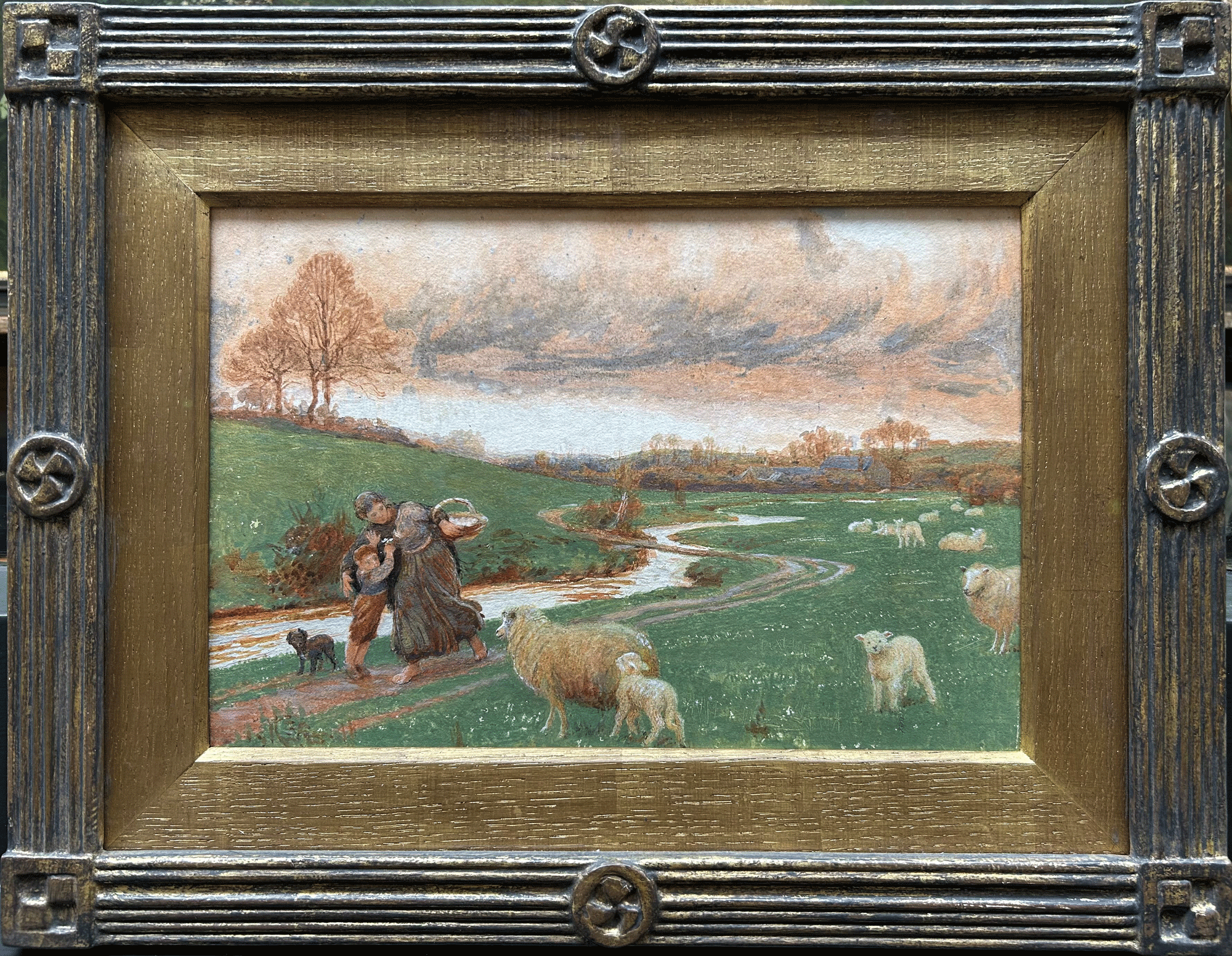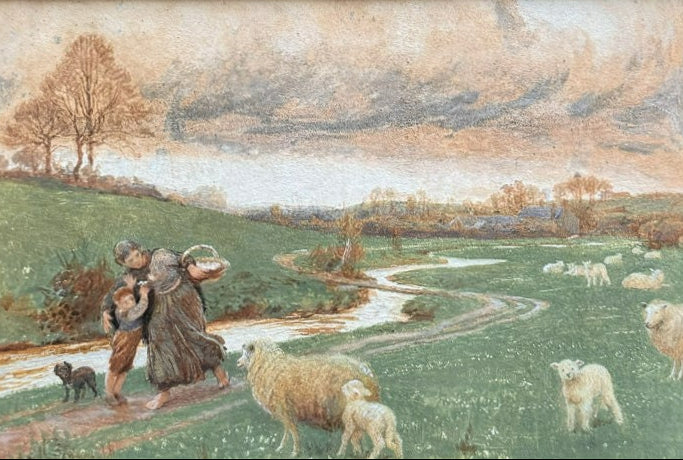

Frederick Walker
The Right of Way
Watercolour and bodycolour on paper
Image size: 12 x 8 inches (30.5 x 20.25 cm)
Handmade Pre-Raphaelite style frame
In this pastoral scene, the sky is portrayed with twisting clouds, suggesting the onset of a summer storm. On the right-hand side of the painting, dotted across a field sheep and their lambs create an idyllic backdrop to the stormy scene. In the foreground, a little boy, looking visibly frightened, tries to climb on to his mother who is balancing a basket of freshly gathered eggs. To their left a small scruffy dog accompanies the figures. Behind them, a winding stream meanders off into the distance, adding depth to the landscape. This scene is imbued with a luminous quality, where the vibrant oranges and electric greens create a striking and energetic contrast.
This work is a study for the painting that is displayed in the National Gallery of Victoria, Melbourne.
Frederick Walker RWS
Frederick Walker, an esteemed British social realist painter and illustrator, Frederick Walker, was hailed by Sir John Everett Millais as the greatest artist of the century. Born into a family of eight children, Walker’s father was a jeweller and his grandfather an artist who had exhibited regularly at the Royal Academy and British Institutions. Frederick’s mother, Ann, was an embroiderer and had become the family’s main breadwinner after the death of his father in 1847.
Walker displayed an early talent for art, studying at the North London Collegiate School in Camden and teaching himself to copy prints using pen and ink. After initially working in an architect’s office Walker enrolled as a student at the British Museum and later at artist James Mathews Leigh’s art school. In 1858 he became a student at the Royal Academy but later abandoned his classes to apprentice under wood engraver, Josiah Wood Whymper, J.W. North and George Pinwell, all while developing his own practice on the side.
In 1895, Walker joined the Artist’s Society in Langham Chambers, and for five years between 1860 and 1865, he was a successful black and white illustrator for popular magazines of the day, with much of his work from this period being engraved by Joseph Swain. His artistic talents were further acknowledged when he won medals for his work at the Paris Exhibition of 1867. Walker also exhibited at the Royal Watercolour society from 1864 until the end of his life. He became an associate member in February 1864 and a full member in 1866.
Museums
National Gallery of Victoria, Melbourne
Victoria and Albert Museum, London
Tate Gallery
Lady Lever Art Gallery, Liverpool
Royal Academy of Arts, London
We are grateful to Donato Esposito for his help with this artwork and Christopher Newall.



